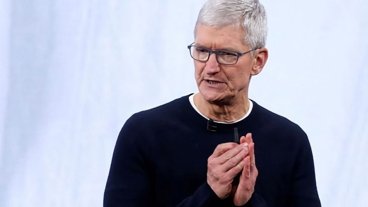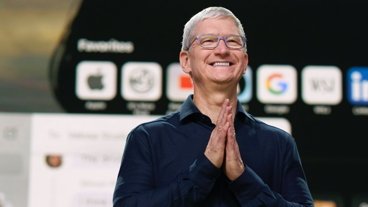Analysts shrug off reports of Apple iPhone 13 production cuts, issues
A report Tuesday indicated that Apple could cut iPhone 13 production by as much as 10 million units because of supply problems. Analysts don't believe that it'll affect Apple much.
The report, published by Bloomberg on Tuesday, suggests that Apple is seeing issues with some of its ancillary partners hitting production quotas. More specifically, the report claims that Broadcom and Texas Industries are having problems delivering non-CPU chips.
Incorporating the predicted order cut, Apple should deliver up to 80 million units by the end of 2021. Even at 80 million, this is still a year-over-year improvement in 2021, albeit a lower one.
The company also warned earlier in 2021 that ongoing supply problems could start to affect the iPhone. Previously, Apple's handset seemed largely immune from the problem, which has snarled production for most of its Android rivals.
Despite the headline, most analysts don't believe that the supply issues will materially change how the iPhone 13 and iPhone 13 Pro cycle will play out. Here's what four analyst had to say about the report.
Katy Huberty, Morgan Stanley
Lead analyst Katy Huberty of Morgan Stanley says that the bank is a buyer on any near-term Apple share price weakness because of supply chain disruptions.
Huberty notes that Morgan Stanley hasn't heard of any material production bottlenecks, but points out that the industry is still plagued by supply problems. However, she says Apple is likely to receive more supply than its rivals, demand isn't perishable, and her 2022 estimates aren't likely to change even if revenue and earnings-per-share shifts across quarters.
Because of that, Morgan Stanley is maintaining a "buy-the-dip" mentality for Apple. Even beyond her previous reasons, Huberty says that a 10 million unit production cut would bring the implied estimates in-like or slightly higher than the previous three years of new iPhone model production.
Huberty maintains her 12-month Apple price target of $168.
Daniel Ives, Wedbush
Wedbush's Daniel Ives says that his iPhone growth story remains unchanged, and likens the Bloomberg report to a "supply chain timing issue."
"Taking a step back, 5 million to 10 million units moving out of the December quarter into the March quarter due to well understood supply chain issues is not a worry for us and ultimately speaks to a stronger demand trajectory than the Street had been anticipating with the supply chain constraints now needing to reduce builds given component shortages."
Ives said the current upgrade forecast and a higher average selling price (ASPs) leads him to believe that the production cuts are "nothing more than a speed bump" on a multi-year iPhone super-cycle.
The analyst maintains his 12-month Apple price target of $185
Samik Chatterjee, JP Morgan
Samik Chatterjee at JP Morgan says that the production headwinds would change the timing of upside for Apple investors, but wouldn't materially change the magnitude of Apple's success.
For one, the analyst says that production cutes "should not be completely surprising," since the current supply situation is fraught with risks. Every 5 million units of lower production, however, implies a $0.10 reduction in his holiday quarter earnings-per-share estimate. That implies downside to near-term consensus.
However, Chatterjee notes that JP Morgan is continuing to see demand and interest for the iPhone 13 lineup tracking better than investor expectations. He says the supply issues may only push the timing of upside for Apple investors. He adds that JP Morgan has not picked up on any challenges in its supply chain checks, but adds that the investment bank is waiting to collect additional information.
Chatterjee maintains his 12-month Apple price target of $180.
Rod Hall, Goldman Sachs
Analyst Rod Hall of Goldman Sachs starts off his note that pointing out that iPhone 13 lead times are tracking significantly higher than the iPhone 12 in 2020, though he notes that this is only an indicator of supply-demand balance.
Hall says that the extended lead times could be as easily explained by supply issues than by higher-than-expected demand, pointing toward the Bloomberg report on Tuesday. However, Hall adds that factors like re-opening, consumer savings, and supply shortages all make predictions more difficult in 2021.
However, the analyst says it remains his belief that "Apple will find it increasingly hard to grow revenues and may well experience declining revenues for a period as the company laps positive COVID effects."
Hall maintains his 12-month Apple price target of $140.
 Mike Peterson
Mike Peterson











 Malcolm Owen
Malcolm Owen
 William Gallagher and Mike Wuerthele
William Gallagher and Mike Wuerthele
 Christine McKee
Christine McKee
 William Gallagher
William Gallagher

 Marko Zivkovic
Marko Zivkovic









